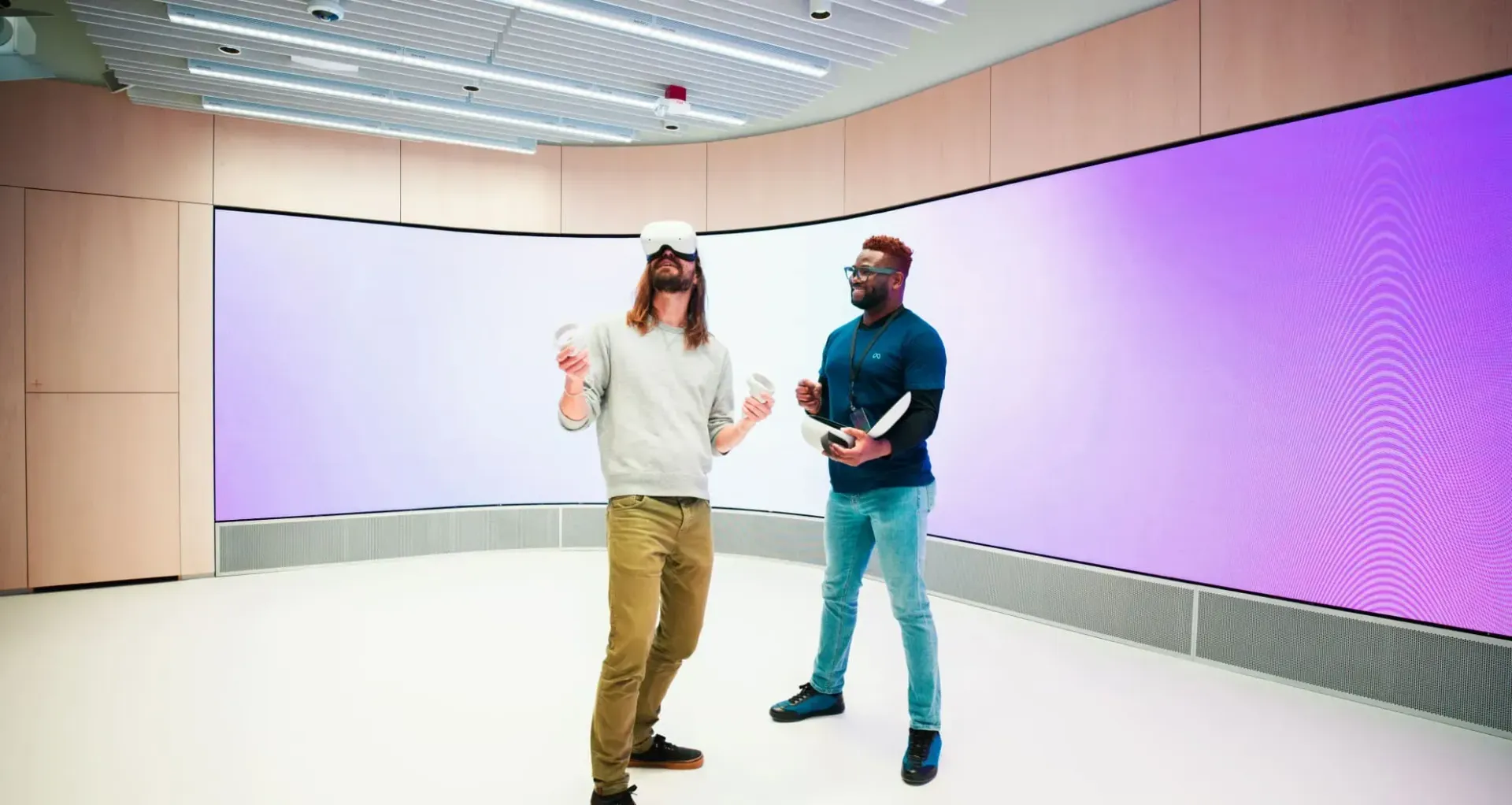Videoconferencing has come a long, long way
From bulky inefficient computers to hands-free XR wearables – videoconferencing technology has finally come into its own. Trace its history in our guide.

Nowadays, videoconferencing is as normal as shampoo and shoelaces.
Tools like Google Meet and Microsoft Teams are installed as standard on computers and smartphones around the globe. They're essential to day-to-day business, whether you're a lone home worker or the CEO of a multinational corporation.
This hasn't always been the case. Indeed, before the pandemic, videoconferencing was a comparatively niche concern.
The technology has picked up at a rapid pace. And, as we'll see, we're already entering a new era of videoconferencing – an era where the tech has become more accessible, and more useful, than ever.
But before we cover that, how did we get here?
To find out, let's trace the history of videoconferencing technology from its origins way back in the 1800s.
Yes, you read that right.
The early days
Visions of teleconferencing were fermenting in the minds of 19th-century tech wizards as early as 1870.
Initial attempts were made by Bell Laboratories to conceive a transmission device that could send and receive audio and video signals. However, it wasn't until the early 20th century – with the mass production of hi-spec TV cameras – that Bell Labs' dream of video calls was to become a reality.
Nascent examples of the technology utilised many miles of coaxial cables to connect participants, meaning video-telephony was largely confined to offices and offered very little in the way of convenience or call quality.
Birth pangs: the dawn of the modern era of teleconferencing
The 20th century saw the adoption of more advanced video telephony technology for moon landings and media. These used bi-directional radio frequencies to transmit video at long distances – but they were too bulky and costly for consumers or typical businesses.
Commercial markets remained difficult to penetrate until 1970 with the launch of AT&T's Picturephone. However, the service was fraught with issues stemming from the lack of market engagement. In other words, it had no customers.

The company sank 500 million into its research, forecasting a million users in the first year. However, only 500 subscriptions were sold. Picturephone owners were a rare and sorry lot, proudly standing at the bleeding edge of videoconferencing technology… with nobody to conference with.
Because of the lack of interoperability, competing services suffered the same charade – and high costs tempered curiosity towards their products.
For example, Compression Lab's 1982 CLI T1 was the first of its kind: a group videoconferencing system that would start the revolution in enterprise workflow. Just $250,000 for the system and $1,000 per hour to lease the dedicated T1 line… Maybe not.
Despite these birth pangs, steady gains were being made – such as IBM's videoconferencing service, which was set up to connect its New York headquarters with its Japanese offices.
The digital transformation
It wouldn't be until the transition to digital media, with the introduction of high-speed networks, that video calls would become a bonafide "thing" – with realistic, scalable applications for both business and consumer.
Advances in video compression and mobile networks drove renewed interest in video calling as the barriers to entry fell one by one. By the mid-2000s, many mobile phones and desktop computers supported video telephony. And in 2005, Lifesize Communications rolled out the first HD videoconferencing service aimed at businesses.
Anyone born before the 90s will remember the cascade of web-based video communication services flooding the market. Before Zoom, there was Microsoft Messenger's web chat function, AOL's instant messaging service and many others.
And, of course, who could forget Skype? Such was the success of Skype's marketing that it temporarily served as a stand-in verb for "video call" – a rhetorical device in language called anthimeria. (You're welcome.)
The pandemic
During the COVID-19 pandemic, videoconferencing took on new meaning. It became a vital service in support of families, friends and colleagues, connecting loved ones and keeping businesses afloat.
Videoconferencing usage
rocketed to 21 times more than before the pandemic, a huge shift in user engagement and a catalyst for software developers to make meaningful improvements to their services.
The rise in use cases provided a huge sample size for developers to address weaknesses in their service and set the stage for a revolution in videoconferencing technology.
SimplyVideo and XR: the future of videoconferencing
Just as video telephony was improving, extended reality (XR) devices were providing scalable enterprise solutions. One such advancement is the ability to collaborate hands-free with colleagues and clients on projects and call in remote expertise for troubleshooting in time-sensitive situations.
But the videoconferencing technology of old just doesn't cut the mustard anymore. That's why SimplyVideo was created – to shore up those weaknesses and create a service that meets the needs of modern businesses, without exception.
Developed to work with all the leading XR headsets – as well as desktops and mobile devices – SimplyVideo makes collaboration intuitive and simple.
Leveraging the power of XR requires a more sophisticated and intelligent video conferencing interface in order to maximise the potential of the hardware and minimise downtime and unnecessary faff.
To achieve this, SimplyVideo
integrates with all major video conferencing platforms, helping to connect office staff with their frontline cohorts. Extending the service to deskless workers empowers businesses as a whole by building resilience and cohesion into their workforces and democratising knowledge across the board.
Work calls between remote staff are a simple click or voice command away. Once on the call, participants in remote areas can access vital information, collect data and request specialist knowledge.
But SimplyVideo isn't just for remote collaboration. It's a collaborative tool for creatives, allowing multiple participants to descend upon a digital project, visualise problems and work together towards solutions.
Don't be encumbered by a project's size or scope. With every session saved and backed up, SimplyVideo keeps an index of files and conversations that are easy to access.
Chat 4.0
Alongside intuitive video-call functionality, SimplyVideo includes a feature-laden chat box to make communication and collaboration that much more efficient and effective.
Inside Chat 4.0, you can snap photos from your video or live stream as well as annotate someone else's feed. Using see-what-I-see video streams, callers can send their POV to be annotated with text and drawing, adding another layer of communication and resilience to your workflow.
Bandwidth-optimised video streaming for a seamless connection
With SimplyVideo, there's no need to worry about dropouts in your call. Unlike other videoconferencing providers, our service is designed to work effectively with bandwidth-limited connections, keeping communication uninterrupted even in remote, hard-to-access areas.
Want to harness SimplyVideo's advanced
XR video call platform in your business?
Get in touch today to request a demo – or
start a 30-day free trial.












